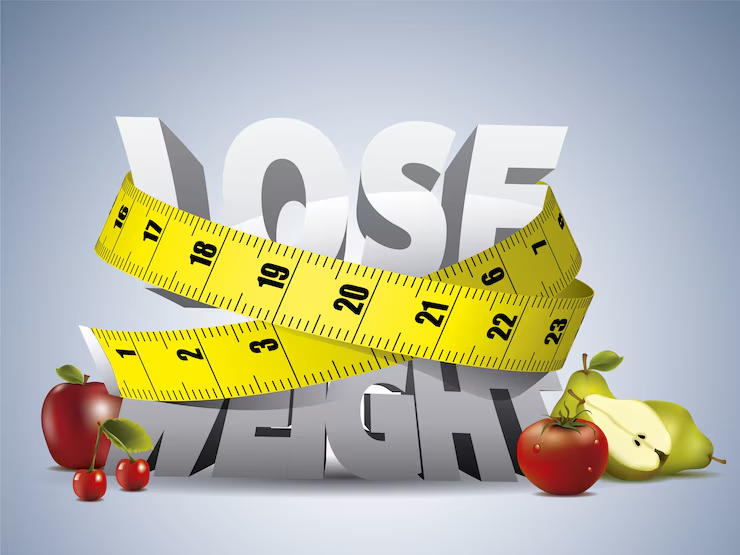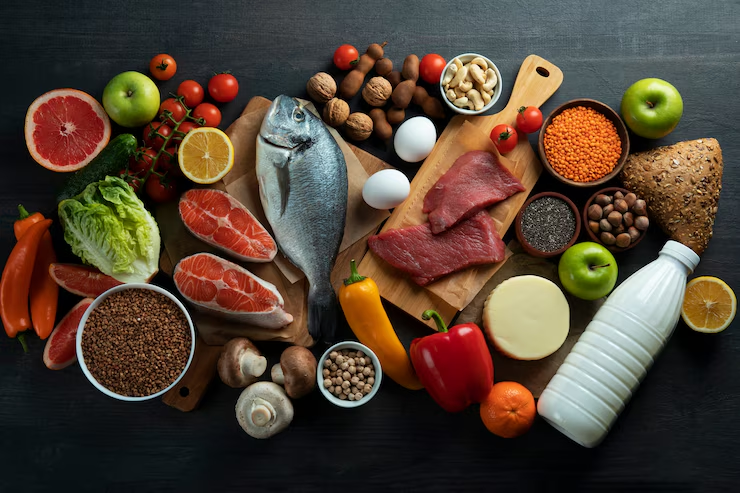Starting a journey to lose weight can feel confusing and overwhelming, especially with so much conflicting information out there. From crash diets to extreme workout plans, it’s difficult to know what actually works and what might be harmful. For beginners, the key is to focus on proven methods that support long-term health and weight loss.
If you’re new to trying to lose weight, it’s easy to feel unsure about where to begin. With countless diet plans, fitness routines, and lifestyle tips available, many people end up feeling frustrated or unmotivated. Unrealistic goals and rapid fixes often lead to burnout and disappointment.
This beginner-friendly guide offers a clear and balanced approach to help you lose weight in a healthy, sustainable way. By focusing on small, manageable changes in eating habits, activity levels, and mindset, you’ll build strong, long-lasting habits. This step-by-step approach supports both physical health and emotional well-being on your path to success.
Chapter 1: Understanding Lose Weight

Before you begin dieting, exercising, or exploring other strategies, it’s important to understand the core principles that help you lose weight effectively. This foundation will guide your efforts and support long-term success in reaching your weight loss goals.
1.1. The Science of Weight Loss
At the heart of any successful effort to lose weight lies a fundamental principle: the balance between calories consumed and calories burned. This is often referred to as “calories in versus calories out.” To shed excess pounds, the number of calories you take in through food and beverages must be less than the number your body uses for all its functions—ranging from physical activity and exercise to essential processes like digestion, breathing, and circulating blood.
When you maintain a consistent calorie deficit—meaning you eat fewer calories than your body needs—your body begins to compensate by using stored fat as a source of energy. Over time, this energy shortfall results in gradual fat loss. It’s a straightforward yet powerful concept that forms the basis of nearly every effective weight loss plan. Understanding this mechanism helps you make more informed choices about your eating habits and activity levels, setting you up for sustainable and long-lasting results.
1.2. Basal Metabolic Rate (BMR) and Total Daily Energy Expenditure (TDEE)
To determine how many calories you need to consume in order to lose weight, it’s important to first understand two key concepts: your BMR and TDEE. Your Basal Metabolic Rate (BMR) represents the number of calories your body needs to perform basic life-sustaining functions while at rest. These include vital activities such as maintaining your heartbeat, supporting digestion, regulating body temperature, and keeping your organs functioning properly. Even if you were to lie in bed all day without moving, your body would still require this amount of energy to keep you alive.
However, most people are not at rest all day, which is why your Total Daily Energy Expenditure (TDEE) gives a more accurate picture of your daily calorie needs. TDEE includes all the calories burned through daily activities like walking, exercising, working, and even fidgeting.
To effectively lose weight, you need to create a caloric deficit, which means consuming fewer calories than your TDEE. This forces your body to draw energy from fat stores, resulting in gradual, sustainable weight loss over time.
Chapter 2: Setting Realistic Goals
A common mistake when trying to lose weight is setting goals that are too ambitious. Rapid weight loss may seem appealing, but it’s rarely healthy or lasting. Instead, aim for realistic, achievable goals that keep you motivated, support steady progress, and help prevent frustration or burnout along the way.
2.1 Start Slow and Steady
When you’re trying to lose weight, it’s important to aim for a safe and sustainable rate of weight loss. Typically, losing about 1-2 pounds per week is considered healthy. Rapid weight loss can lead to muscle loss, nutritional deficiencies, and a higher chance of regaining the weight. Starting with smaller, more achievable goals will keep you on track and prevent burnout. This gradual approach helps maintain motivation, allowing you to celebrate small wins and stay focused on your long-term goals.
2.2 Focus on Long-Term Health, Not Just Aesthetic Goals
While losing weight can lead to aesthetic improvements, it’s crucial to focus on the broader health benefits. Weight loss can enhance your energy levels, reduce the risk of chronic diseases like heart disease and diabetes, and improve mental well-being. Shifting your focus to long-term health goals, rather than just immediate visual changes, will keep you motivated throughout your journey and make it more sustainable in the long run.
Chapter 3: Nutrition – The Cornerstone of Lose Weight
What you eat is crucial when trying to lose weight. Many people struggle with nutrition, either by following fad diets or not understanding how to eat for fat loss. Understanding proper nutrition is key to achieving sustainable weight loss and supporting your long-term health goals.
3.1. The Importance of a Caloric Deficit
As mentioned earlier, losing weight comes down to consuming fewer calories than your body burns. To create a caloric deficit, you can either reduce your caloric intake, increase your physical activity, or do a combination of both. However, it’s not simply about cutting calories—choosing the right foods is equally important. Opting for nutrient-dense, whole foods can help you feel full and satisfied, making it easier to stick to your calorie goals without feeling deprived. Focusing on foods that support fat loss, like lean proteins, healthy fats, and high-fiber vegetables, will also help you maintain muscle mass and overall health during your weight loss journey.

3.2. Macronutrients: Protein, Carbs, and Fats
When planning your meals, it’s crucial to focus on the right balance of macronutrients—proteins, carbohydrates, and fats. Here’s why each one matters:
Protein: Protein is crucial for muscle maintenance and repair, especially when you’re trying to lose weight. Preserving muscle mass is important because muscle burns more calories even at rest. Aim for 0.7 to 1 gram of protein per pound of body weight to support fat loss and muscle retention.
Carbohydrates: Carbs are your body’s primary energy source, and while cutting carbs drastically might lead to short-term weight loss, it’s not a sustainable solution. Instead, focus on complex carbohydrates like whole grains, vegetables, and fruits. These provide fiber and essential nutrients that support long-term weight loss and overall health.
Fats: Healthy fats are essential for hormone regulation, brain function, and general well-being. When trying to lose weight, include sources like avocados, nuts, seeds, olive oil, and fatty fish in your diet. Aim for healthy fats to make up 20-35% of your daily caloric intake for optimal health.
3.3. Portion Control and Mindful Eating
Even when eating healthy foods, portion control is essential for lose weight. Overeating, even with nutritious options, can prevent you from achieving your weight loss goals. Practice mindful eating by paying attention to portion sizes, recognizing when you feel full, and knowing when to stop. By being more aware of how much you’re eating, you can prevent overeating, make healthier choices, and stay on track with your efforts to lose weight effectively.
Chapter 4: Exercise – Moving Your Body for Lose Weight
While nutrition is crucial, exercise plays a vital role in helping you lose weight. It boosts calorie burn, improves metabolism, and enhances overall health. The most effective exercise plan for losing weight is one that you enjoy and can stick to consistently. Whether it’s strength training, cardio, or a combination of both, finding an activity you love makes it easier to stay motivated and committed to your weight loss journey.
4.1. Types of Exercise
There are two primary types of exercise that can help with weight loss:

Cardiovascular (Aerobic) Exercise: Cardiovascular activities, such as running, cycling, swimming, and walking, elevate your heart rate and increase calorie burn. These exercises are highly effective for burning fat and improving cardiovascular health by enhancing heart function and stamina. Regular cardio not only supports weight loss but also boosts endurance and supports overall fitness, making it an essential part of any exercise routine for those looking to shed pounds and improve heart health.
Strength Training (Resistance Training): Strength training involves activities like lifting weights, doing bodyweight exercises, or using resistance bands. This type of exercise is vital for building lean muscle mass, which in turn boosts your resting metabolic rate. As a result, strength training helps you burn more calories at rest, aiding in fat loss over time. Incorporating resistance exercises into your routine not only helps with losing weight but also increases strength and improves muscle tone, promoting a healthier body composition.
4.2. Finding a Routine That Works for You
A combination of both cardio and strength training is ideal for lose weight. Aim for at least 150 minutes of moderate-intensity aerobic exercise weekly, along with 2-3 strength training sessions. Consistency is key, so choose activities you enjoy to avoid viewing exercise as a chore. Incorporating variety, such as dancing, hiking, or group fitness classes, can help keep you motivated and engaged in your weight loss journey while improving overall fitness and burning calories.
4.3. Including NEAT (Non-Exercise Activity Thermogenesis)
In addition to formal exercise, increasing your daily activity level through NEAT (Non-Exercise Activity Thermogenesis) is crucial for losing weight. Activities like walking, gardening, cleaning, or taking the stairs can significantly boost your calorie expenditure. By incorporating more movement into your day, you can create a larger calorie deficit without needing a dedicated workout session. These small changes add up over time, supporting your weight loss goals and promoting a more active and healthy lifestyle.
Chapter 5: Sleep and Stress – The Hidden Factors in Weight Loss
Sleep and stress play a significant role in your ability to lose weight. Lack of sleep and high stress levels can hinder your progress by affecting hormones that regulate hunger and metabolism. Prioritizing rest and stress management can help support your weight loss efforts and improve overall health.
5.1. The Importance of Sleep
Lack of sleep can disrupt vital hormones that regulate hunger, like ghrelin and leptin, leading to overeating and difficulty in controlling your appetite. Consistently getting 7-9 hours of quality sleep each night is essential for losing weight. Sleep also helps the body recover from workouts, boosts metabolism, and lowers stress levels, all of which are crucial for effective weight loss.
5.2. Managing Stress
Chronic stress increases cortisol levels, a hormone that can make it harder to lose weight by promoting fat storage, especially around the belly. Stress also triggers emotional eating or cravings for unhealthy, high-calorie foods. To manage stress and support weight loss, incorporate relaxation techniques like meditation, yoga, deep breathing exercises, or take regular breaks to reduce cortisol levels and prevent emotional eating.
Chapter 6: Staying Motivated and Overcoming Plateaus
Motivation can fluctuate during your weight loss journey. While initial enthusiasm is common, sustaining that drive can be challenging. It’s also normal to experience weight loss plateaus, which can feel discouraging. Stay focused, adjust your approach, and remember that progress takes time and consistency.

6.1. Tracking Progress Beyond the Scale
While the scale is a helpful tool in tracking your lose weight, it doesn’t tell the whole story. Even if your weight remains the same, your body composition—such as the balance of muscle versus fat—may be changing. To get a fuller picture of your progress, take measurements, track how your clothes fit, monitor your energy levels, and note any improvements in strength or endurance during your workouts. These indicators can offer more insight into your weight loss journey.
6.2. Plateaus and How to Break Through Them
Lose Weight plateaus occur when your body adapts to your routine. It’s a common hurdle on the path to losing weight, but it doesn’t mean you’ve hit a dead end. To break through a plateau, try adjusting your exercise routine, modifying your calorie intake, or changing your macronutrient ratios. Often, even a small tweak in your plan can get your weight loss progress moving again. Be proactive, and don’t get discouraged by these natural pauses in your journey.
6.3. Staying Consistent and Patient
Lose weight is a long-term process, and results don’t happen overnight. It’s important to stay consistent with your nutrition and exercise habits, even when progress seems slow. Celebrate the small victories along the way to keep motivated. Remember that patience is key—trust the process and stay focused on your goals, knowing that with consistency, your efforts will pay off in time.
Conclusion: Your Weight Loss Journey Starts Now
Starting a lose weight journey can feel overwhelming, but understanding the fundamentals of weight loss, setting realistic goals, and focusing on healthy habits are key to long-term success. It’s important to approach weight loss as a lifestyle change rather than seeking quick fixes.
Achieving sustainable weight loss involves focusing on nutrition, regular physical activity, and balancing sleep and stress. Make sure you’re eating the right foods, exercising consistently, and prioritizing recovery for both body and mind. These factors contribute to steady progress over time.
Now that you have a clear roadmap for your weight loss journey, the next step is to take action. Start small, stay consistent, and trust yourself. Progress may take time, but each step, no matter how small, brings you closer to your goals and sets you up for a healthier, happier future.
FAQs
1. How do I know how many calories I should eat to lose weight ?
To lose weight, you need to eat fewer calories than your body burns. You can calculate your BMR (Basal Metabolic Rate) and TDEE (Total Daily Energy Expenditure) to figure out how many calories you need. A typical starting point is creating a 500-750 calorie deficit per day, which leads to healthy weight loss of about 1-2 pounds per week.
2. Can I lose weight without exercising ?
Yes, weight loss is mostly about creating a caloric deficit, which can be achieved through diet alone. However, exercise helps boost metabolism, preserve muscle, and improves overall health. While it’s not required, combining a healthy diet with exercise gives the best long-term results.
3. What type of exercise is best for weight loss ?
A combination of cardio (like running or swimming) and strength training (like weight lifting) is most effective for weight loss. Cardio helps burn calories, while strength training builds muscle, which increases your metabolism. A mix of both gives you a balanced approach.
4. How can I stay motivated during my weight loss journey ?
Staying motivated can be tough, but focusing on small, achievable goals helps. Celebrate your progress, track non-scale victories like better energy or improved fitness, and find support through friends or online communities. Keep reminding yourself of your long-term health benefits.
5. What should I do if I hit a weight loss plateau ?
Plateaus are normal. If you hit one, try adjusting your calorie intake, changing your workout routine, or adding more strength training. Sometimes, small tweaks can break the plateau and get you moving forward again. Patience and consistency are key.